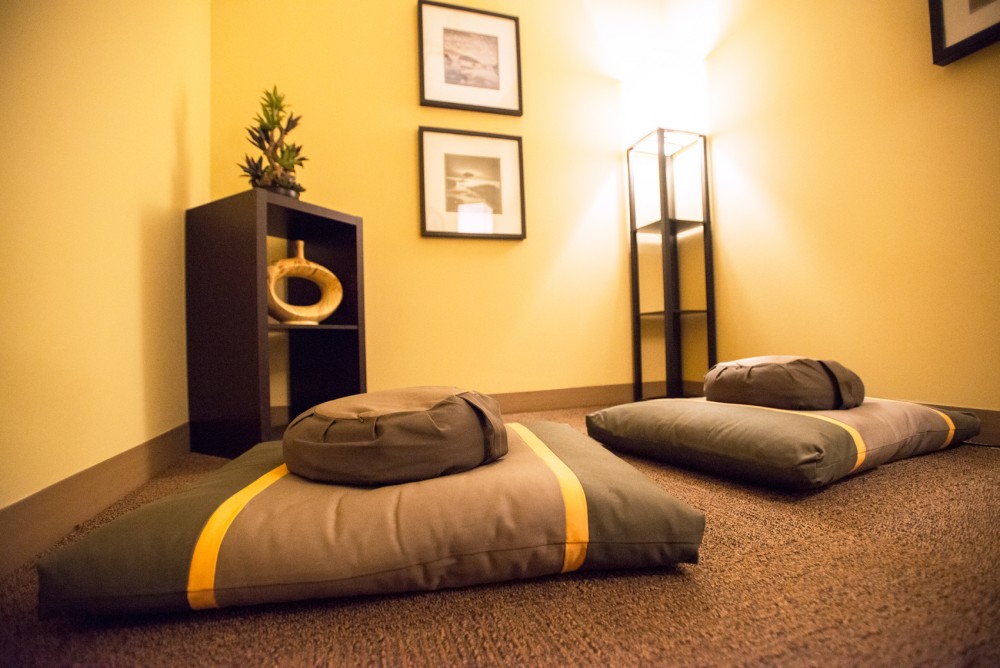For University of Minnesota students juggling assignments and social lives, or balancing budding careers with paying the bills, there’s now a space on campus where they can just breathe.
Earlier this month, two meditation rooms opened in 17th Avenue and Comstock halls to facilitate student mindfulness, an initiative years in the making.
“The push really was in thinking about how [to] meet the needs of a diverse student population who are coming to our campus, living in our residence halls [and] wanting to treat this space like their home,” said Assistant Director of Housing and Residential Life Kristie Feist.
She said the rooms are designed for calming activities — such as prayer, meditation or relaxation — which students may have participated in at home but find difficult to do with the minimal privacy offered by dorm life.
“Part of this process is really helping students understand the resources that are available to them,” Feist said.
Before the meditation rooms opened, she said, there weren’t obvious spaces for students to escape the stresses caused by rigorous coursework and jam-packed schedules.
Paul Kinkade, president of the Mindfulness for Students Club, said he has felt the academic benefits of meditation.
“It just gives you the ability to focus a lot better, to actually be present while you are in class and when you sit down to do homework,” Kinkade said. “It’s a deliberate choice — your mind isn’t being pulled in a million directions.”
Student experiencing mental health issues could also benefit from engaging in mindful practices, said Mary Clark, a therapist at Boynton Mental Health Clinic.
“The focus of meditation is to be aware of and open to what we are experiencing,” she said.
Clark said this awareness can reveal anxious and depressive habits and tendencies and is crucial to combating them. If the thoughts go unnoticed, they are inadvertently reinforced, she said.
Meditation also helps students with physiological symptoms associated with many mental illnesses, said Gary Christenson, Boynton’s chief medical officer.
Because it can be both a therapeutic and preventative approach to health, Christenson advised students to consider the practice for stress reduction in their daily lives.
“Meditation has many different variations,” he said, “but it can simply be stepping out of the stress of your daily life and just experiencing a calm environment.”


